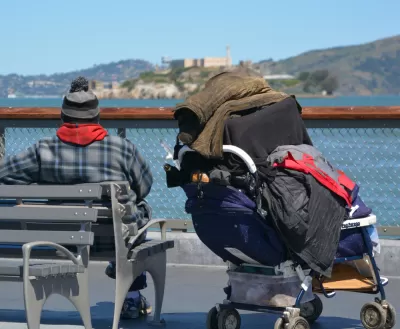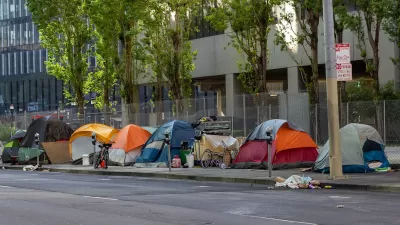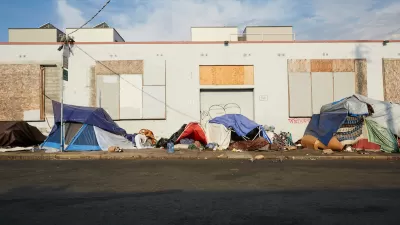In a first since 2015, the number of people experiencing homelessness in San Francisco declined from the year prior, according to preliminary analysis of the city’s most recent Point-in-Time count.

“[N]ew data released Monday showed that San Francisco’s unhoused population has fallen 3.5% since 2019, the first such decline the city has reported in years,” report Andre Picon and J.D. Morris for the San Francisco Chronicle.
“The data shows the total number of unhoused residents in San Francisco at 7,754, a 3.5% drop from the 8,035 homeless people counted in 2019 when the city saw a 17% spike. The number of unsheltered people in tents and cars dropped 15%,” according to the article.
San Francisco officials attributed the reported 15% overall drop in the unsheltered homeless population to significant increases in shelter beds and supportive housing resources, "including a 24% increase in available shelter beds over the past three years,” add Picon and Morris.
The news comes despite predictions that homelessness would spike during the pandemic. Similar point-in-time counts for other parts of the region showed increasing numbers of people experiencing homelessness. For example, "Alameda County’s homeless population increased by 22% since 2019, jumping from 8,022 to 9,747, according to that county’s one-night count,” according to the article.
San Francisco’s Point-in-Time count took place on February 23, 2022. The process for this year’s count implemented a substantive change: instead of volunteers, homeless service workers conducted the survey.
FULL STORY: New data shows fewer people are homeless in San Francisco. Here’s why

Study: Maui’s Plan to Convert Vacation Rentals to Long-Term Housing Could Cause Nearly $1 Billion Economic Loss
The plan would reduce visitor accommodation by 25% resulting in 1,900 jobs lost.

Alabama: Trump Terminates Settlements for Black Communities Harmed By Raw Sewage
Trump deemed the landmark civil rights agreement “illegal DEI and environmental justice policy.”

Why Should We Subsidize Public Transportation?
Many public transit agencies face financial stress due to rising costs, declining fare revenue, and declining subsidies. Transit advocates must provide a strong business case for increasing public transit funding.

Paris Bike Boom Leads to Steep Drop in Air Pollution
The French city’s air quality has improved dramatically in the past 20 years, coinciding with a growth in cycling.

Why Housing Costs More to Build in California Than in Texas
Hard costs like labor and materials combined with ‘soft’ costs such as permitting make building in the San Francisco Bay Area almost three times as costly as in Texas cities.

San Diego County Sees a Rise in Urban Coyotes
San Diego County experiences a rise in urban coyotes, as sightings become prevalent throughout its urban neighbourhoods and surrounding areas.
Urban Design for Planners 1: Software Tools
This six-course series explores essential urban design concepts using open source software and equips planners with the tools they need to participate fully in the urban design process.
Planning for Universal Design
Learn the tools for implementing Universal Design in planning regulations.
Smith Gee Studio
Alamo Area Metropolitan Planning Organization
City of Santa Clarita
Institute for Housing and Urban Development Studies (IHS)
City of Grandview
Harvard GSD Executive Education
Toledo-Lucas County Plan Commissions
Salt Lake City
NYU Wagner Graduate School of Public Service





























